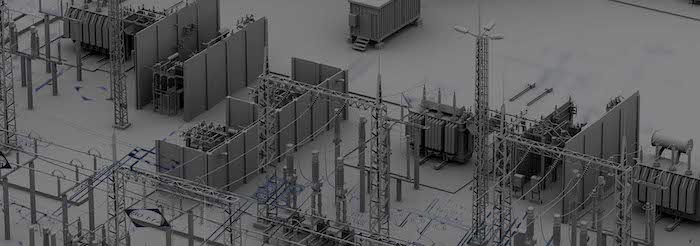Physical asset management is a crucial practice that empowers companies to maximize the utilization of their tangible resources effectively. Whether managed in-house or with the assistance of external experts, this strategic approach involves knowing the company’s assets firsthand, determining depreciation value, and analyzing the assets’ utility in the production process. By implementing cost analysis, companies can extend the economic life of assets, reduce component failures, prevent theft, and optimize procurement processes. Moreover, physical asset management aids in tax planning, forecasting business solutions, and can potentially save organizations millions of dollars.
The Role of Physical Asset Management in Business Optimization
1. Cost Analysis for Enhanced Efficiency
Conducting a comprehensive cost analysis is a critical aspect of physical asset management. This analysis enables businesses to make informed decisions about repairing or replacing aging machinery. If the cost of repairs surpasses that of acquiring a new machine, it may be prudent to consider selling the old one at a reasonable price and investing in a newer, more efficient model. Such strategic moves prevent production downtimes and enhance overall productivity.
2. Optimizing Store Operations
For companies with multiple stores, physical asset management can identify stores that are underperforming and not generating substantial revenue. By evaluating profitability and considering factors such as rising fuel costs and economic slowdown, organizations can make data-driven decisions about store closures or mergers, ensuring the business stays resilient and competitive.
3. Strategic Opportunities and Decision-making
Having a clear understanding of their assets through physical asset management prevents companies from missing out on lucrative opportunities. By knowing what assets are available and assessing needs, businesses can make timely and informed decisions, positioning themselves to seize advantageous prospects when they arise.
Leveraging Technology for Streamlined Asset Management
Asset Management Software for Seamless Tracking
Investing in asset management software streamlines the process of tracking and managing assets. This technology enables management to access asset information conveniently via the company’s intranet. Implementing barcode systems akin to those used in supermarkets facilitates accurate and time-saving inventory management.
The Four Stages of the Physical Asset Management Cycle
1. Planning and Procurement
During the planning and procurement stage, companies assess their asset needs, evaluate various suppliers, and invest in affordable and efficient equipment. This stage sets the foundation for effective asset management throughout the asset lifecycle.
2. Productive Utilization
In the second stage, asset users focus on maximizing equipment productivity. By ensuring proper utilization, companies can derive optimal value from their assets, enhancing overall operational efficiency.
3. Financial Management and Evaluation
The financial management stage involves assessing whether the asset investment was worthwhile. This includes accurate accounting for taxes, depreciation, and other associated costs. By carefully evaluating financial aspects, businesses can make informed decisions regarding asset maintenance, upgrades, or replacements.
4. Disposal and Compliance
In compliance with environmental regulations, obsolete assets must be appropriately disposed of during the final stage of the asset management cycle. Responsible disposal practices contribute to sustainability and environmental responsibility.
Making Tough Decisions for Business Resilience
Implementing physical asset management often involves making tough decisions for the long-term viability of the company. By carefully navigating the asset lifecycle and optimizing resources, businesses can adapt to changing market conditions and ensure their survival and success.
Conclusion
Physical asset management emerges as a fundamental practice for businesses seeking to enhance efficiency, minimize operational downtime, and drive profitability. By conducting cost analysis, optimizing store operations, and leveraging asset management software, companies gain valuable insights that empower strategic decision-making. The four stages of the asset management cycle provide a roadmap for optimizing asset utilization while adhering to compliance and environmental regulations. In challenging times, physical asset management serves as a beacon of resilience, guiding businesses towards a prosperous and sustainable future.
FAQs
1. What is physical asset management, and why is it important for businesses?
Physical asset management refers to the practice of effectively utilizing and managing the tangible assets of a company. It is essential for businesses as it allows them to optimize asset utilization, minimize downtime, reduce costs, and make informed decisions about asset maintenance, replacement, or disposal.
2. How does physical asset management contribute to cost savings for companies?
Physical asset management involves conducting cost analysis to determine whether it is more cost-effective to repair or replace aging machinery. By making data-driven decisions, companies can avoid unnecessary expenditures on frequent repairs and invest in newer, more efficient assets, leading to long-term cost savings.
3. Can physical asset management help in maximizing asset productivity?
Absolutely. One of the key stages of physical asset management involves optimizing asset utilization. By ensuring proper and productive use of assets, companies can extract the maximum value from their investments, leading to increased productivity and efficiency.
4. How does asset management software facilitate the management of physical assets?
Asset management software provides a digital solution for streamlined asset tracking and management. It allows management to access asset information conveniently via the company’s intranet. By implementing barcode systems, this software enhances accuracy and saves time during inventory management.
5. What are the stages of the physical asset management cycle?
The physical asset management cycle comprises four stages:
- Planning and Procurement: Assessing asset needs, evaluating suppliers, and acquiring affordable and efficient equipment.
- Productive Utilization: Focusing on maximizing asset productivity through effective use.
- Financial Management and Evaluation: Assessing the financial performance of assets, including taxes, depreciation, and associated costs.
- Disposal and Compliance: Properly disposing of obsolete assets in compliance with environmental regulations.
6. How can physical asset management aid in making strategic business decisions?
By providing comprehensive insights into asset performance, costs, and productivity, physical asset management enables informed decision-making. Businesses can strategize based on accurate data, seize opportunities, and adapt to market changes effectively.
7. What role does physical asset management play in business resilience?
Physical asset management equips businesses to adapt to challenges and uncertainties. By optimizing asset utilization, reducing costs, and making tough decisions when needed, companies can enhance resilience and ensure their survival and success.
8. Can physical asset management contribute to sustainable business practices?
Yes, responsible asset disposal practices during the asset management cycle promote sustainability and environmental responsibility. Companies can adhere to regulations while ensuring eco-friendly asset management.
9. Is physical asset management suitable for all types of businesses, regardless of their size?
Yes, physical asset management benefits businesses of all sizes. Whether a small enterprise or a large corporation, optimizing asset utilization and making informed decisions about assets is essential for long-term growth and success.
10. How can businesses get started with physical asset management?
To begin with physical asset management, businesses should assess their current assets, implement asset management software if feasible, and develop a comprehensive plan for asset tracking, utilization, and maintenance. Seeking professional guidance or employing asset management experts may be beneficial for a seamless implementation.




